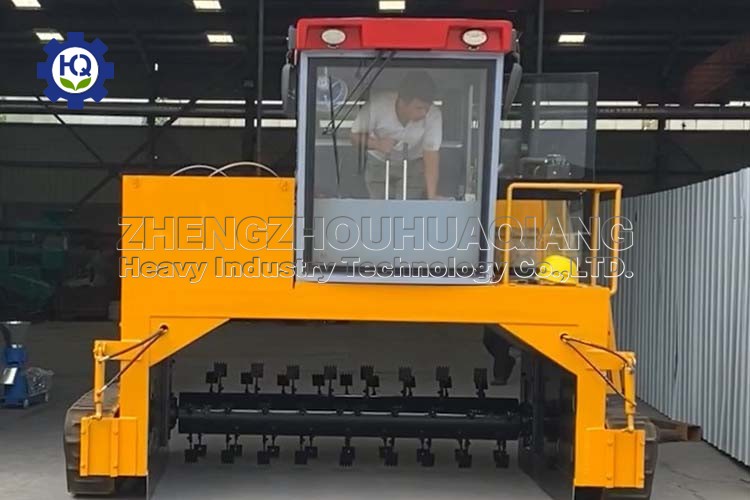In the process of organic fertilizer fermentation production, the organic fertilizer turning machine has demonstrated strong advantages in saving manpower and material resources, bringing tangible convenience and economic benefits to enterprises and producers.
In terms of manpower, the traditional method of fermenting and turning organic fertilizers requires a large amount of manual operation. Workers need to use shovel, rake and other tools to turn over the mountains of organic materials again and again, with great labor intensity and low efficiency. At the end of the day, the workload of the workers is limited, making it difficult to meet the demands of large-scale production. The emergence of organic fertilizer turning machines has completely changed this situation. A flipping machine only requires a few operators to perform simple operations, and can complete large-scale and large-scale material flipping work in a short period of time. This not only greatly reduces the number of workers and lowers labor costs, but also liberates workers from heavy physical labor, improving work comfort and safety.
In terms of material resources, the organic fertilizer turning machine also has excellent performance. The traditional stacking method may require a large number of auxiliary tools, such as shovel, cart, etc. These tools are not only expensive to purchase, but also easy to damage. They need to be replaced frequently, increasing production costs. And the flipping machine integrates multiple functions, only one device is needed to complete complex flipping tasks, reducing dependence on other tools.
In addition, the use of a stacker can also reduce material loss. In the traditional manual flipping process, due to inaccurate and uneven operation, some materials may be excessively flipped and lost, or waste may be caused by poor local fermentation due to untimely flipping. The organic fertilizer turning machine minimizes material loss and improves material utilization through precise operation and uniform turning.
Moreover, the efficient operation of the stacker can shorten the fermentation cycle and accelerate production progress. This means that companies can push their products to the market faster, accelerate the return of funds, and reduce the cost of capital occupation. At the same time, it also reduces the storage costs that may arise from long-term storage of materials.
The organic fertilizer turning machine, with its outstanding advantages in saving manpower and material resources, has become an important tool for modern organic fertilizer production enterprises to improve production efficiency and reduce costs, effectively promoting the development of the organic fertilizer industry.





